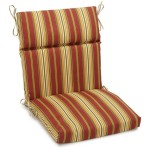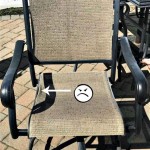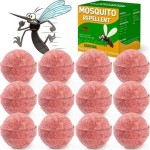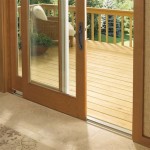Flooring for Patio Over Concrete: A Comprehensive Guide
Concrete patios, while durable and cost-effective, can sometimes lack the aesthetic appeal and comfort desired for an outdoor living space. Many homeowners seek to enhance their concrete patios with alternative flooring options that offer improved aesthetics, increased comfort, and sometimes, enhanced safety. Selecting the appropriate flooring for placement over concrete requires careful consideration of factors such as climate, budget, intended use, and desired visual outcome. This guide offers a detailed overview of various flooring options suitable for concrete patios, highlighting their advantages, disadvantages, and installation considerations.
Understanding the Existing Concrete Slab
Before selecting and installing any new flooring over a concrete patio, it is crucial to thoroughly assess the existing concrete slab. The condition of the concrete directly impacts the longevity and performance of the new flooring. Key factors to consider include:
Cracks and Damage: Inspect the concrete slab for cracks, chips, spalling, or other forms of damage. Small hairline cracks may not pose a significant problem, but larger cracks or widespread damage could indicate underlying structural issues that need to be addressed before proceeding. Patching compounds and concrete resurfacing products can be used to repair minor damage. For more significant structural issues, consulting with a structural engineer or concrete specialist is recommended.
Moisture Levels: Concrete is porous and can absorb moisture from the ground, which can lead to problems with the new flooring, such as mold growth or adhesive failure. A moisture test should be conducted to determine the moisture content of the concrete slab. This can be done using a calcium chloride test kit or by consulting with a professional flooring installer who has specialized moisture testing equipment. If high moisture levels are present, consider applying a moisture barrier to the concrete before installing the new flooring.
Surface Preparation: The concrete surface needs to be clean, level, and properly prepared to ensure proper adhesion of the new flooring. Remove any dirt, debris, oil stains, or existing coatings. A thorough cleaning with a pressure washer or a concrete cleaner is typically required. For uneven surfaces, self-leveling concrete compounds can be used to create a smooth and level base. Grinding the concrete surface can also enhance adhesion.
Popular Flooring Options for Concrete Patios
A wide array of flooring options are available for installation over concrete patios, each offering unique characteristics, benefits, and drawbacks. The selection process should be based on a careful evaluation of individual needs and preferences.
1. Interlocking Deck Tiles: Interlocking deck tiles are a popular choice for covering concrete patios due to their ease of installation and versatility. These tiles typically consist of composite materials, wood, or plastic and feature an interlocking system that allows them to be quickly and easily snapped together without the need for adhesives or specialized tools.
- Advantages: Easy DIY installation, good drainage, available in various materials and styles, relatively low cost.
- Disadvantages: Can be prone to shifting or lifting, susceptible to fading or staining depending on the material, may require trimming for edges and corners.
2. Outdoor Carpeting: Outdoor carpeting provides a comfortable and aesthetically pleasing surface for concrete patios. It is typically made from synthetic fibers that are resistant to moisture, mildew, and fading. Outdoor carpeting can be installed directly over the concrete using adhesives or double-sided tape.
- Advantages: Soft and comfortable underfoot, provides insulation, reduces noise, available in various colors and patterns.
- Disadvantages: Can be susceptible to staining, requires regular cleaning, may trap moisture if not properly installed, can be challenging to remove.
3. Porcelain or Stone Pavers: Porcelain and stone pavers offer a durable and elegant flooring solution for concrete patios. These pavers are typically thicker and more robust than standard patio pavers and can withstand heavy foot traffic and harsh weather conditions. They can be installed using a variety of methods, including mortar, sand, or gravel.
- Advantages: Durable and long-lasting, resistant to staining and fading, aesthetically pleasing, available in a wide range of colors, sizes, and textures.
- Disadvantages: Can be expensive, requires professional installation, heavy and difficult to handle, can be slippery when wet.
4. Epoxy Coatings: Epoxy coatings provide a seamless and durable surface for concrete patios. These coatings are typically two-part systems that consist of a resin and a hardener. When mixed together, they create a chemical reaction that results in a hard, glossy finish. Epoxy coatings can be tinted or colored to create a variety of decorative effects.
- Advantages: Durable and long-lasting, resistant to stains and chemicals, easy to clean, available in various colors and finishes.
- Disadvantages: Requires professional installation, can be slippery when wet, susceptible to scratching, can be expensive.
5. Rubber Flooring: Rubber flooring is a resilient and slip-resistant option for covering concrete patios. It is often used in areas where safety is a concern, such as around swimming pools or playgrounds. Rubber flooring is available in various forms, including tiles, rolls, and mats.
- Advantages: Slip-resistant, shock-absorbent, durable, easy to clean, relatively low cost.
- Disadvantages: Can be susceptible to fading, may have a rubbery odor, can be difficult to repair.
Key Considerations for Installation
Proper installation is crucial for the long-term performance and aesthetic appeal of any flooring installed over a concrete patio. Several key factors should be considered during the installation process.
1. Drainage: Ensure that the flooring system allows for proper drainage of water. Standing water can lead to mold growth, structural damage, and safety hazards. Consider using permeable flooring materials or incorporating drainage channels into the design.
2. Expansion and Contraction: Concrete expands and contracts with changes in temperature and humidity. The flooring system should be designed to accommodate these movements to prevent cracking or buckling. Expansion joints should be incorporated into the design, especially for large areas.
3. Adhesives and Fasteners: Select appropriate adhesives and fasteners that are compatible with both the concrete substrate and the flooring material. Use waterproof adhesives for outdoor applications. Follow the manufacturer's instructions carefully to ensure proper adhesion.
4. Professional Installation: While some flooring options can be installed by homeowners, others require professional installation. Consider hiring a qualified flooring contractor for complex installations or if you lack the necessary skills or tools.
5. Edge Treatment: Pay attention to the edges of the flooring system. Use edge trim or bullnose tiles to create a clean and finished look. Secure the edges properly to prevent tripping hazards.
Maintenance and Care
Regular maintenance and care are essential for preserving the appearance and extending the lifespan of flooring installed over concrete patios. The specific maintenance requirements will vary depending on the type of flooring material used.
1. Cleaning: Regularly clean the flooring to remove dirt, debris, and stains. Use a mild detergent and water solution for most flooring materials. Avoid using harsh chemicals or abrasive cleaners that can damage the surface.
2. Sealing: Seal porous flooring materials, such as stone or concrete, to protect them from stains and moisture damage. Apply a sealant every one to two years or as needed.
3. Repairs: Promptly repair any cracks or damage to prevent them from spreading. Use patching compounds or replacement tiles to fix minor damage. Consult with a professional for more significant repairs.
4. Seasonal Maintenance: Perform seasonal maintenance tasks, such as removing leaves and debris in the fall and cleaning the flooring in the spring. Protect the flooring from snow and ice during the winter months.
By carefully considering these factors and selecting the appropriate flooring option, homeowners can transform their concrete patios into attractive and functional outdoor living spaces. Choosing the right material, ensuring proper installation, and implementing a regular maintenance plan will ensure years of enjoyment.

5 Ways To Upgrade Your Concrete Patio

How To Lay Deck Flooring On A Concrete Patio The Home

Outdoor Flooring Over Grass Or Dirt Interlocking Tiles

Concrete Patio Finishes 7 Outdoor Flooring Options Network

Concrete Patio Transformation 7 Steps To Diy A New Outdoor Oasis

Patio Outdoor Flooring Encore Concrete Coatings

Outdoor Tile Over Concrete Unique

Top 7 Cheapest Patio Flooring To Choose From

Wood Deck Tiles Over Concrete

How To Lay Deck Flooring On A Concrete Patio The Home








